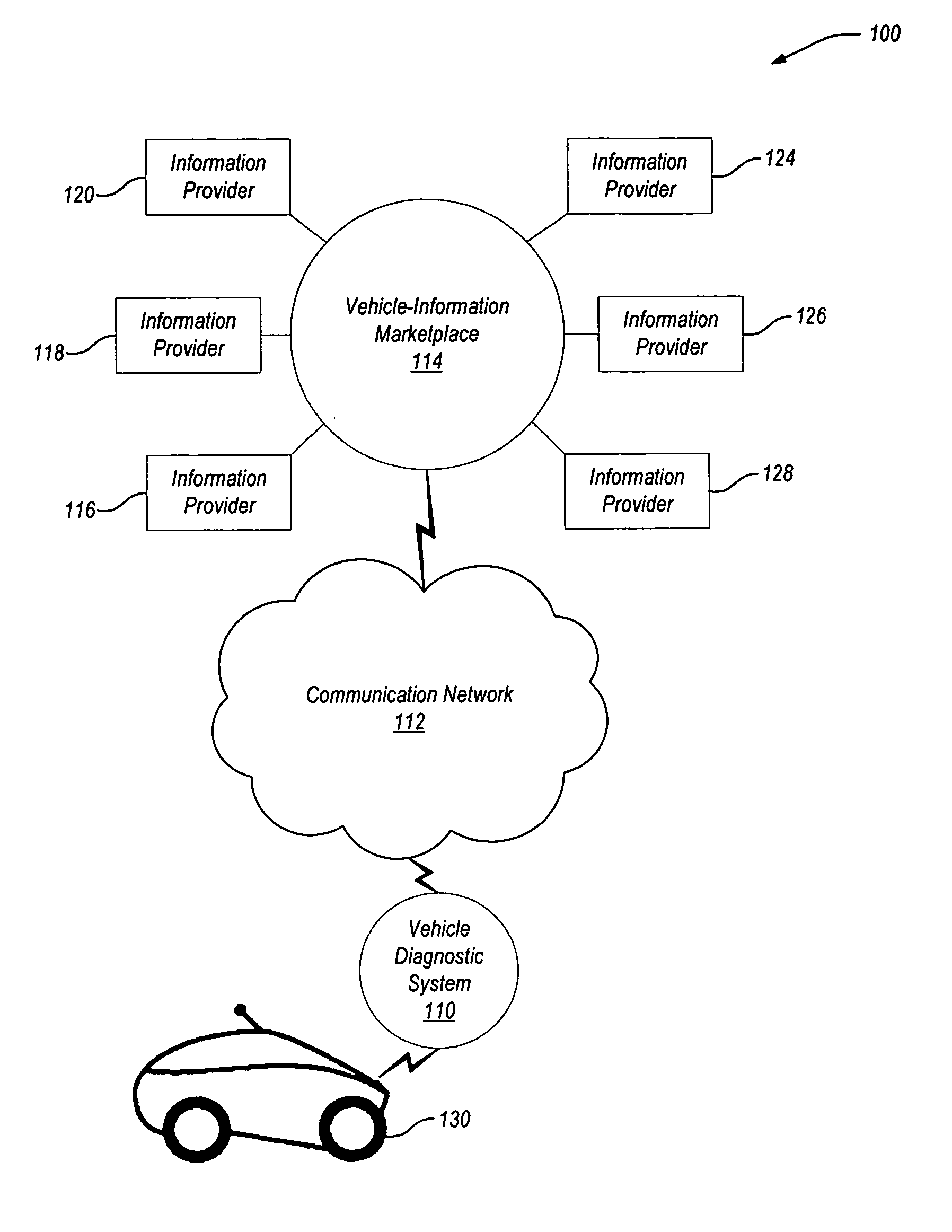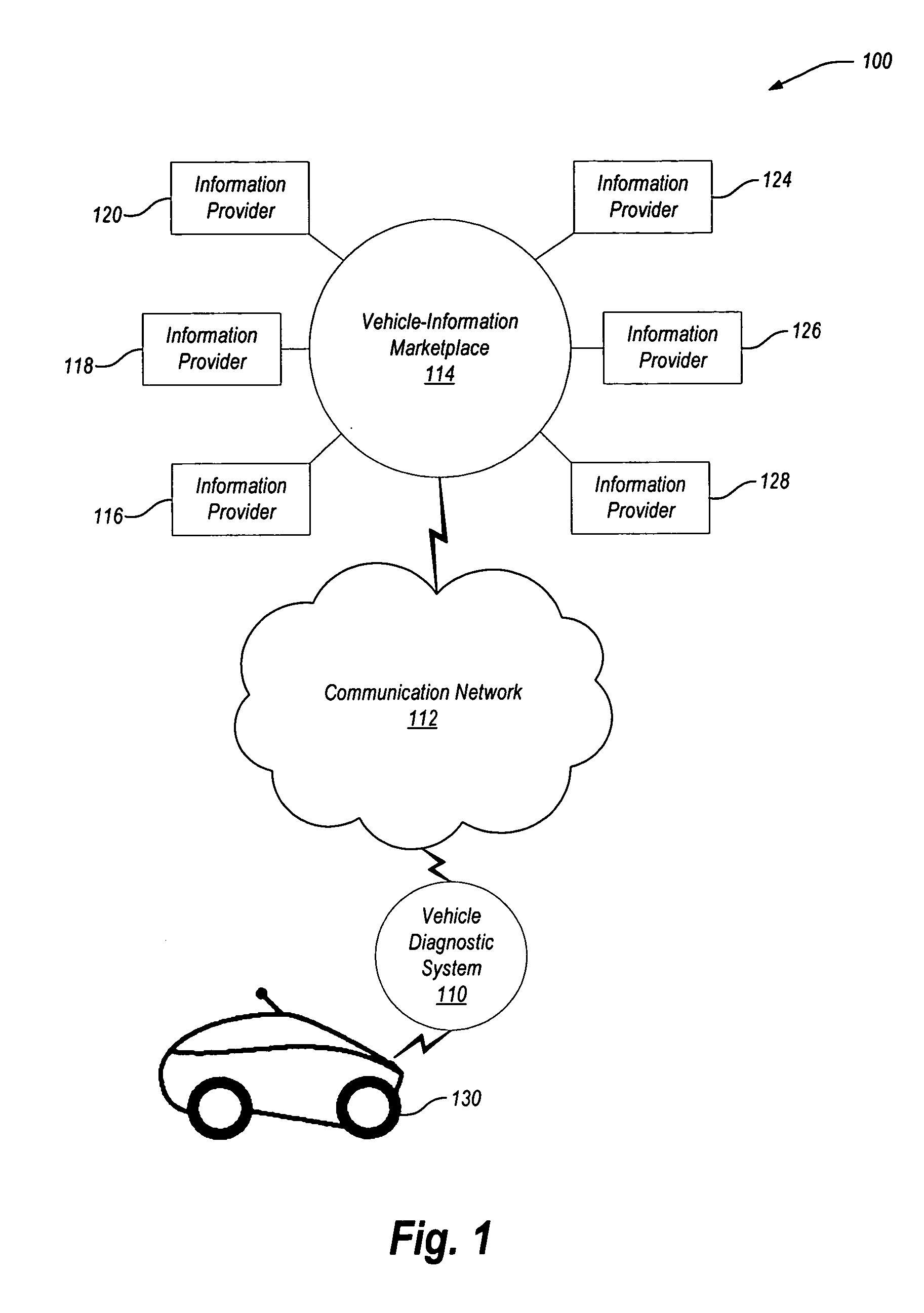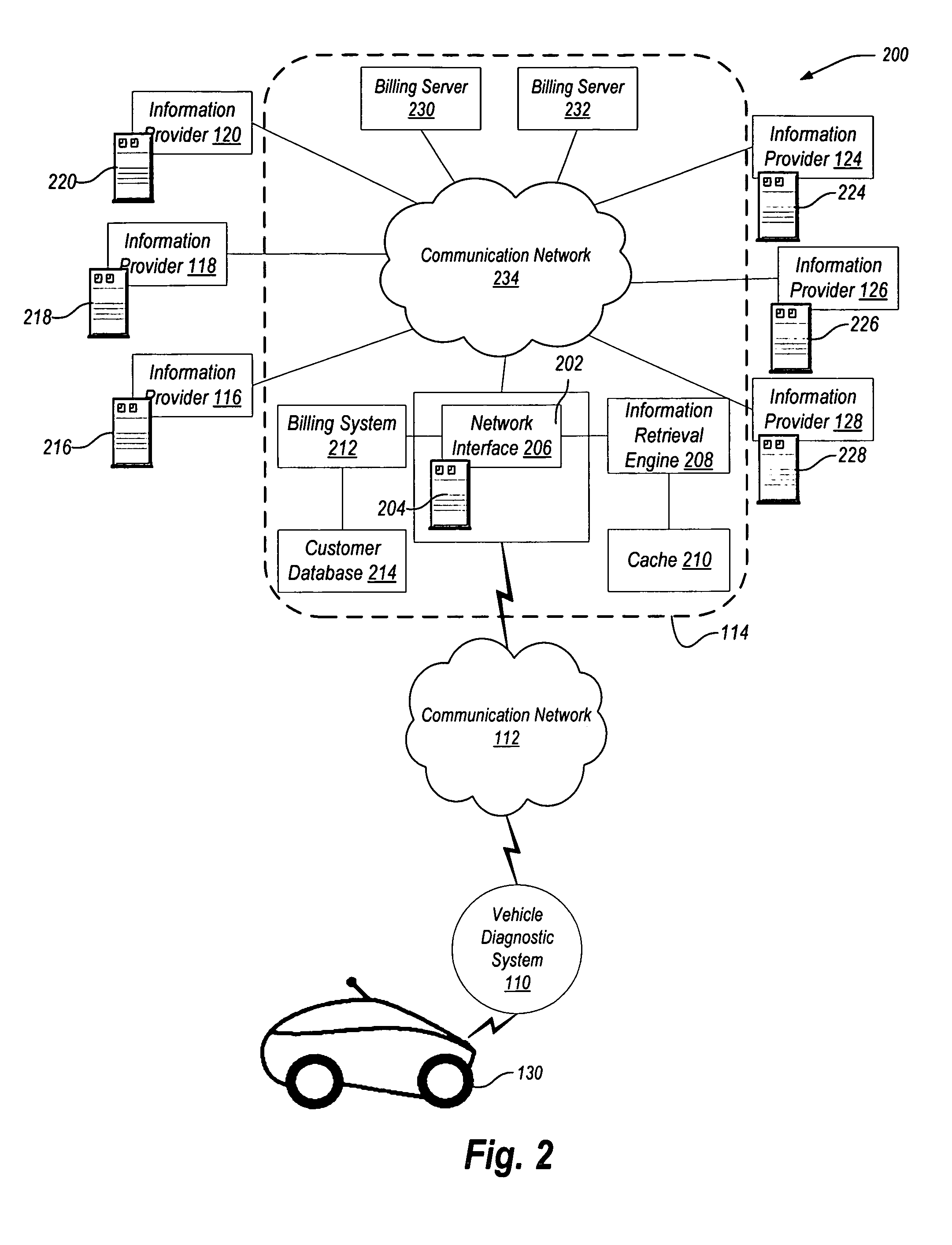And if such errors occur, then the OBD device may
record and / or report the vehicle data to the user.
Since the introduction of OBD systems, vehicles and their corresponding onboard-vehicle systems have increasingly become, and if history serves as an indicator the future, will continue to become substantially more complex; adding more components and functions carried out thereby.
This growing complexity of the vehicles and their corresponding vehicle systems increasingly compounds a likelihood of malfunction of such vehicles and vehicle systems.
This is because the
probability of failure of the components, functions and interactions necessarily increases as a function of the increase in the number of such components, functions and interactions.
Nonetheless, economic infeasibility and computing platform restrictions generally prevents every one (if not any one) of the aforementioned DCC devices from containing all of the logic and / or content (collectively referred to hereinafter as “information”) for analyzing the vehicle data for every vehicle that uses an OBD system.
This is because the information for analyzing vehicle data is often sold by vehicle make, make and / or model year, and
purchasing all the information for all (or even a significant subset of) possible vehicle makes and models is generally cost prohibitive.
In addition, even if a DCC device possesses all available information for analyzing vehicle data for a given vehicle or set of vehicles at a given point in time, the DCC device may not possess information for analyzing the vehicle data that was released after that point in time.
Moreover, some of the DCC devices do not possess the ability to store
on board in non-volatile form any of the information for analyzing the vehicle data.
And for the same reasons as above, the
cartridge or other
memory module may not be programmatically configured with the information for analyzing the vehicle data of the given vehicle or set of vehicles.
As can be readily discerned from the foregoing, when the DCC device lacks information for analyzing vehicle data for a particular condition, the tool becomes useless for carrying out any part of the analysis and / or repair of a vehicle until the tool obtains the lacking information.
Obtaining the lacking information, however, has been a time-consuming and arduous undertaking.
For example, obtaining the lacking information may take days or even weeks given that the time between placing an order for and delivery of the lacking information may be days or even weeks.
Moreover, many times a trained,
programming specialist is required to install the lacking information, and such trained,
programming specialist may not be readily available.
The task of obtaining the lacking information for the DCC device becomes more problematic when considering that manufacturers of DCC devices have an economical interest in ensuring a profit on providing the information for analyzing vehicle data.
To ensure profitability, many of the DCC devices are designed and programmed according to one or more proprietary formats, which thereby limits the sources from which the lacking information may be purchased and / or obtained.
Thus, when a DCC device obtains specific set, particular part or otherwise select-vehicle data associated with an operation of the vehicle (collectively referred to hereinafter as “select-vehicle data”), and then ascertains that it lacks information for analyzing the select-vehicle data, not only does the DCC device become useless for analyzing and repairing the vehicle, but also, the owner of the DCC device is saddled with potentially paying for more information than needed to analyze the select-vehicle data.
 Login to View More
Login to View More  Login to View More
Login to View More 


